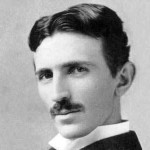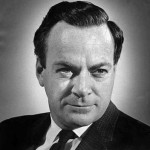Tin Can Rocket Man
A passing nod to the movie Solaris (1972), directed by Andrei Tarkovsky (pictured top left), in The Loaded Tangent’s final post of 2011 supplies the root of this digression: a side-winding homage to the talents of David Bowie (top right).
The experience of watching psychologist Kris Kelvin (played in Tarkovsky’s movie with hangdog restraint by Donatas Banionis), isolated on a space station with his ghosts and memories, triggers an echo of Bowie’s 1969 single, “Space Oddity” – a tune dusted with existential melancholy.
“And I’m floating in a most peculiar way / And the stars look very different today / For here am I sitting in a tin can / far above the world / Planet Earth is blue / and there’s nothing I can do”
The title of the song is a play on Stanley Kubrick’s 2001: A Space Odyssey. That movie was released in 1968, and forms something of a counterpart to Solaris. Phillip Lopate’s essay on the Criterion website explores connections between the two movies, noting that Tarkovsky thought Kubrick’s film was “cold and sterile”.
Bowie’s fascination with all things cosmic surfaces throughout his early work: three of his first eight hits have space-related themes – “Space Oddity”, “Starman” (1972) and “Life on Mars?” (1973) – although the last of that bunch is a surreal meditation on earth-bound escapism.
(There’s a thematic kinship between the un-named girl in “Life on Mars?” – who is “hooked to the silver screen” – and Mia Farrow’s (bottom left) Cecilia in The Purple Rose of Cairo (1985), who finds release from life’s drudgery in the cinema.)
Surveying the full extent of Bowie’s career-to-date, it’s clear that he regards space, science and technology as fertile sources of metaphor but, every now and then, the scientific community returns the favour and looks to the artist for inspiration.
Science writer Philip Ball borrows Bowie’s word “peoploids” (from the spoken word track “Future Legend” on Diamond Dogs) to help explain Dirk Helbing and Peter Molnar’s work on crowd motion (Critical Mass, Ch. 6: The March of Reason).
Christopher Nolan fought hard to secure Bowie for the part of Nikola Tesla (bottom right) in The Prestige (2006), and it’s tempting to wonder if engineer/entrepreneur Elon Musk, who named his electric car company Tesla, will add “Life on Mars?” to the in-flight playlist when he sends the first of his proposed Space X vehicles (top middle) to the Red Planet.
So why has Bowie so consistently and comfortably danced between the worlds of science and the arts? His creative openness to all manner of influences and stimuli may have been encouraged by involvement with the experimental late-’60s Arts Lab movement (he co-founded the Beckenham branch), of which writer Alan Moore (a former member of the Northampton branch) still speaks highly and fondly.
Moore is a master of connections, whose encyclopedic frame of reference allows him to trip lightly through dense thematic minefields, not least in Watchmen (bottom middle), an associative masterwork and one of the all-time great graphic novels.
Fitting, then, but not in the least bit surprising, that Moore should loop this tangent back towards Tarkovsky – one of the later panels in Watchmen (drawn by Dave Gibbons, coloured by John Higgins), features a poster for a Tarkovsky movie season, highlighting Nostalghia and The Sacrifice.
Here’s Bowie, acting out “Space Oddity” in his 1969 promo film, Love You till Tuesday, making the most of his meagre budget with lens filters, bewigged sirens, and a reflective silver tube.
























